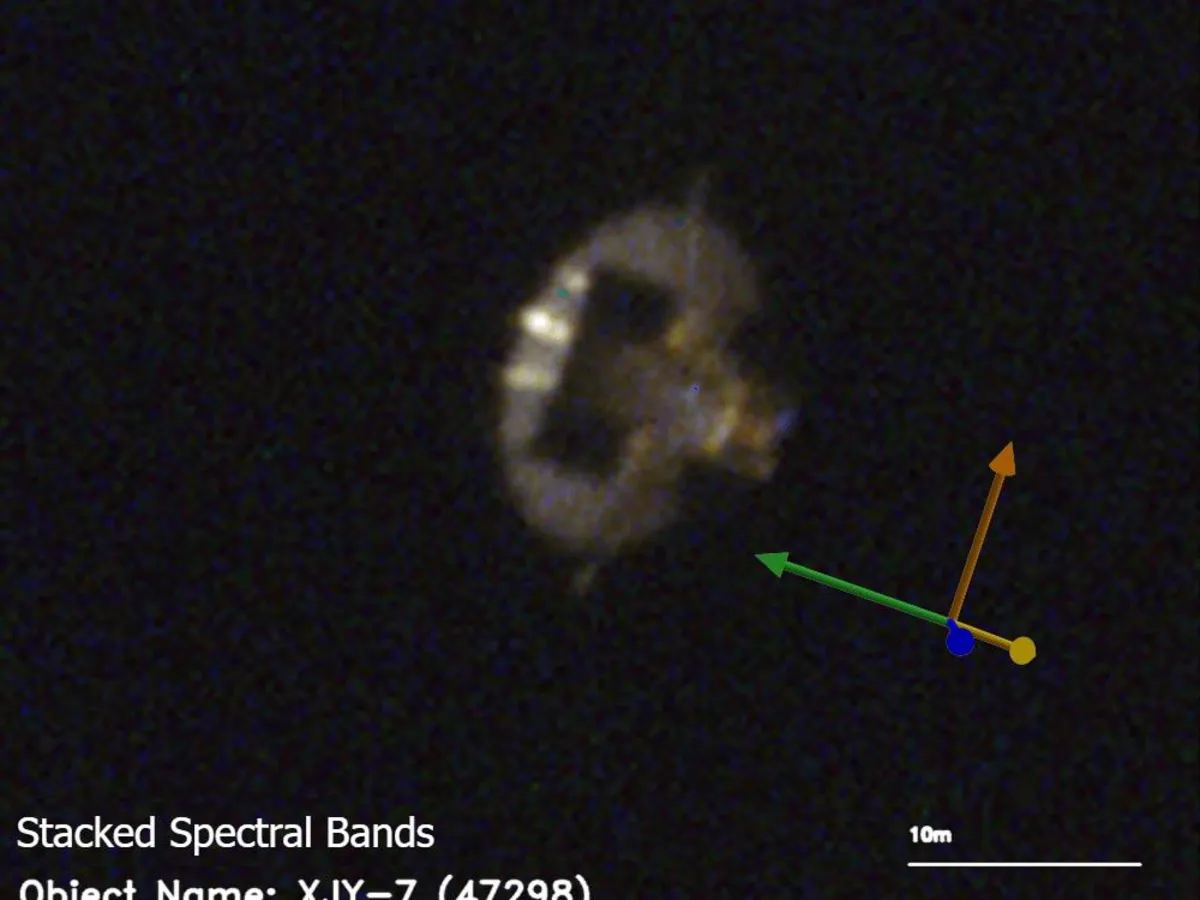
In a groundbreaking revelation, the Australian company HEO has successfully imaged and modeled the enigmatic Chinese satellite, the Xinjishu Yanzheng-7 (XJY-7), just prior to its reentry into Earth’s atmosphere. This endeavor has illuminated previously undisclosed details about the spacecraft, enhancing our understanding of its capabilities and functions.
The XJY-7 satellite, developed by the China Academy of Space Technology (CAST), was launched in December 2020 aboard the inaugural flight of the Long March 8 rocket. Officially described as a new technology verification satellite, its specific functions remained largely a mystery, with the only visual clue provided by a mission control render after its deployment into orbit.
HEO, known for its expertise in non-Earth imaging (NEI), focuses on delivering detailed images of spacecraft in orbit through collaborations with partner Earth observation companies. With its advanced imaging capabilities, HEO has uncovered significant insights regarding the XJY-7 satellite, including the discovery of a synthetic aperture radar (SAR) antenna.
“HEO has characterized and verified key features of the XJY-7 satellite through repeated observations,” the company stated in a report to SpaceNews. “These include the large radar dish that is now deployed and a SAR antenna.” They noted that to sustain power generation, the satellite had to rotate its entire body due to fixed solar arrays. HEO also executed simultaneous imaging missions, utilizing multiple satellites to capture the XJY-7 from various angles and locations, thus providing valuable behavioral intelligence.
Through meticulous 2D observations taken from different perspectives, HEO successfully constructed a verified, high-fidelity 3D model of the XJY-7 satellite. This model unveils the satellite’s true configuration and operational behavior, highlighting the capabilities of NEI in closing the knowledge gap surrounding many such satellites whose details remain ambiguous.
HEO’s advancements in high-frequency imaging technology are revolutionizing the field of Space Domain Awareness (SDA). Traditional SDA methods, including ground radars and telescopes, often lack the ability to provide detailed shape models, attitude behavior, and time-tagged operational patterns. HEO's NEI technology not only aids satellite operators in diagnosing issues but also enriches the data available for analysis, revealing new details about formerly classified or obscure spacecraft.
The implications of satellite-to-satellite imaging extend beyond mere data collection; they also carry a geopolitical dimension. For instance, in July, Maxar (now Vantor) released imagery of a Chinese experiment satellite, Shijian, which is believed to be part of a technology test for China’s next-generation remote sensing capabilities. In a reciprocal action, China’s Changguang Satellite Technology later utilized its Jilin-1 Earth observation fleet to capture and share images of a Worldview satellite.
HEO has conducted approximately 4,000 imaging operations of spacecraft in low Earth orbit, and it is now poised to expand its services to the geostationary belt. The company has made significant strides in enhancing its imaging technologies, techniques, and software, including the development of proprietary sensors that can be integrated into partners’ satellites before launch.
“Our approach allows us to capture large volumes of data across many objects quickly, like XJY-7, so we have a comprehensive understanding of many satellites in orbit and their behaviors,” HEO emphasized.
The XJY-7 satellite entered a sun-synchronous orbit following its launch via the Long March 8. It is reported to have reentered Earth’s atmosphere over the Canary Islands on October 16, based on tracking data from satellite expert Marco Langbroek.